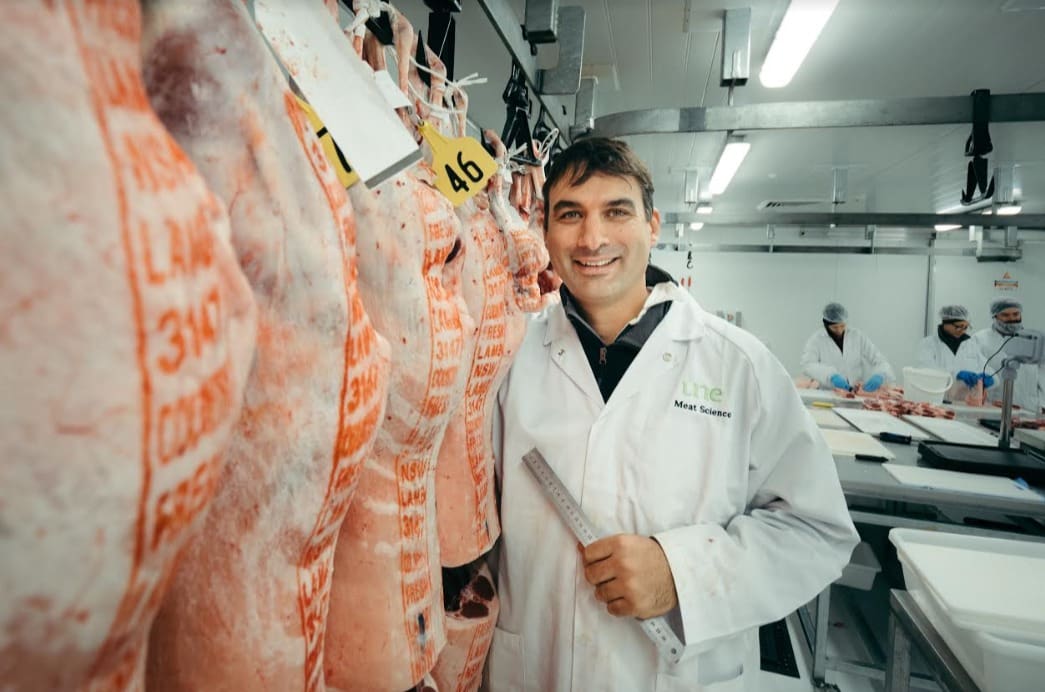
UNE meat scientist Dr Peter McGilchrist with lamb carcases from the university’s research farms. The lamb is being used to develop objective indicators for sheep meat intramuscular fat.
DEFINING lamb quality through dentition should become history with the development of proposed new meat quality measurement technology, according to University of New England meat scientist Dr Peter McGilchrist.
Dr McGilchrist said objective measurement of sheep meat is tantalisingly close.
The Meat Standards Australia (MSA) model for cuts based grading of lamb has been generated: it only needs to be switched on.
“All we need is some numbers for marbling and carcase yield to feed into the predictive model.”
Recent developments have made Dr McGilchrist hopeful. A Japanese company that devised near infra-red (NIR) technology for assessing intramuscular fat (IMF) in tuna visited UNE last week to generate data which will allow the units to be adapted for lamb.
“As soon as we can reliably measure IMF, we can start to use the lamb MSA model, and this outdated process of gauging meat quality through dentition should become history.”
The current definition of lamb is a female, castrate or entire ovine male that has no permanent incisor teeth. The new definition to apply on or after 1 June 2019 will be an ovine animal that is under 12 months of age, or does not have any permanent incisor teeth in wear.
Dr Gilchrist said the long-awaited changes to the definition of lamb are welcome, but they still don’t allow sheep meat to be marketed on quality.
“The beef industry has long given up on using these sort of terms, and beef is sold on how acceptable individual cuts are to the consumer.
“That’s where we need to take sheep meat if we’re really going to extract maximum value for the industry,” he said.
The challenge is bringing in the necessary investment to drive technology development. Compared to the global beef industry, the lamb industry is relatively niche, and only the Australian and New Zealand lamb industries are likely to provide a return to investors.
“We’re hoping we’ll be capable of setting up a system for measuring IMF within 12 months,” Dr Gilchrist said.
“We’re hoping to also bring in measurements of shear force – a measurement of meat tenderness – at some later point to help refine the eating quality predictions for sheep meat.
“When we can start to rank lamb and sheep on these objective measurements, the industry will for the first time have a way of differentiating lamb in the marketplace, and that’s going to open up a whole lot of opportunity,” he said.

HAVE YOUR SAY